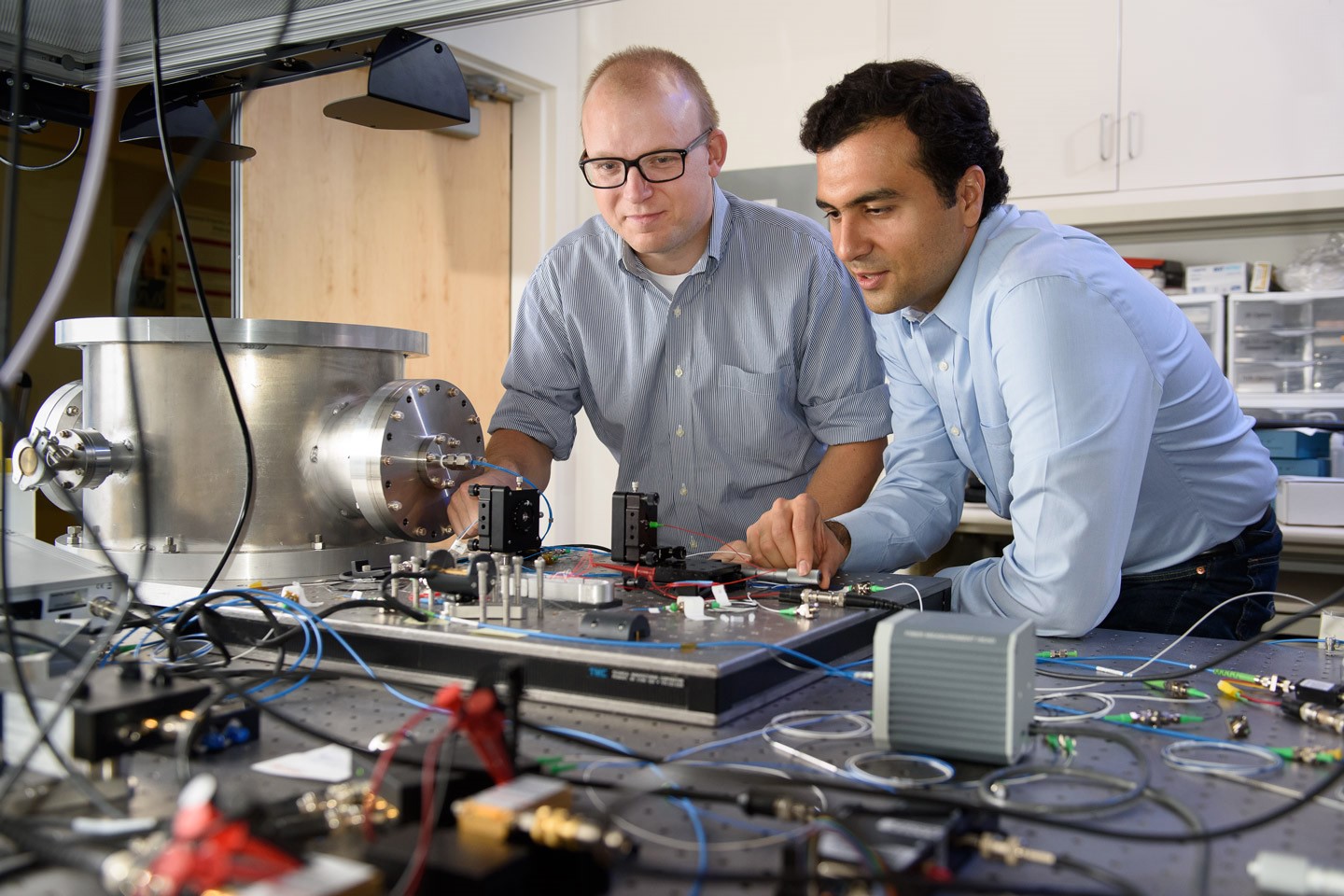
Digital computers are about to reach their maximum processing power within the next 10 or 25 years, leaving a certain class of problems completely unsolved. Now, an entirely new type of computer called the Ising Machine blends optical and electrical processing power to resolve “combinatorial optimization problems” and find the optimal object in a set of finite objects.
If successfully scaled up, the resulting calculation could, in real time, determine which taxi in a fleet to route toward a fare or the optimal way to deliver packages, reports a paper published in the journal Science .
“This is a machine that's, in a sense, the first in its class, and the idea is that it opens up a sub-field of research in the area of non-traditional computing machines,” said Peter McMahon, a postdoctoral scholar in applied physics at Stanford University and co-author of the paper.
Combinatorial optimization problems, the specific type of problems solved by the Ising Machine, are impossible to solve with traditional computers. Calculating the optimal trajectory becomes increasingly complex with each additional layer of variables introduced, requiring a recalculation and comparison of every available combination — just like cracking a 256-bit encryption key one variable at time.
One of the most comprehensive examples of the “combinatorial optimization problem” is called the “traveling salesman” problem, wherein a salesperson has to determine the most effective travel route for visiting a specific number of cities once before returning to the destination. With each extra city added, the number of accountable routes quickly becomes unmanageable.
“Those problems are challenging for standard computers, even supercomputers, because as the size grows, at some point, it takes the age of the universe to search for all the possible solutions,” said Alireza Marandi, a former postdoctoral scholar at Stanford and co-author of the study. “This is true even with a supercomputer because the growth in possibilities is so fast.”
Solving problems like the traveling salesman may have a critical impact in a wide range of areas, providing optimal travel paths for delivery trucks, minimizing interference in wireless networks, and even determining how proteins fold. With scalable potential, the team’s Ising Machine is the precursor to the machines that’ll someday solve these challenges.
Named after a mathematical model of ferromagnetism in statistical mechanics, the Ising machine acts like a reprogrammable network of artificial magnets that operate at low energy and may only point up or down. If the connections among a network of magnets are programmed to represent specific problems, then the final low-energy state in which they settle yields the solution. But instead of using magnets on a grid, the Ising Machine applies a special laser called the degenerate optical parametric oscillator to represent the upward- or downward-pointing “spin.” Regarding the salesman problem, pulses of the laser represent a city’s position in a path the salesman could take.
What’s significant here is that the Stanford Ising Machine could be scaled up into a practical and affordable version by replacing the controllable optical delays with a digital electronic circuit. This enables the optical connection among the pulses to be emulated and programmed while the laser system solves it.
What’s significant here is that almost all of the materials used to construct the Stanford Ising Machine are off-the-shelf elements already used for telecommunications. As a result, scaling up the device into a practical, yet affordable, version is simple. Designers need only replace the controllable delays with digital electronic circuits that emulate the optical connection among the pulses. Programming problems remain just as easy as before, while the laser continues to solve them.
Stanford’s machine currently resolves problems at up to 100 variables with any arbitrary set of connections between variables. Such capability does not surpass the processing power of traditional digital computers even when solving combinatorial optimization problems. But as the variables increase, computers built like the Ising Machine will gain the edge.
Source: Stanford.edu
Advertisement
Learn more about Electronic Products Magazine





